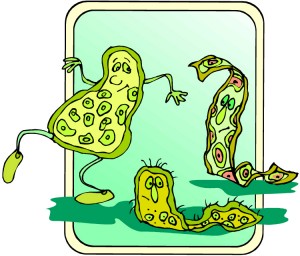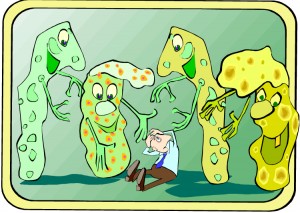Tag Archives: Disease
New Video: Understanding Divine Healing from a Whole Bible Perspective
In this video, we explore the Torah-covenantal perspective on divine healing and move through the Psalms, Prophets, Gospels and Epistles to give a whole Bible or holistic view of divine healing. With the Torah as the foundation, we learn how divine healing relates to our privileges and responsibilities as born-again disciples of Yeshua.
Understanding Divine Healing From a Whole Bible Perspective
A couple of weeks ago, someone reading this blog asked me if I had any teachings on divine healing. I went back over the hundreds of teachings I have given in written and video form and to my surprise I found none. This was in spite of the fact that over the years I have prayed for many hundreds of sick people, and seen many miraculous healings including in my own body.
This study doesn’t cover all there is to say on the subject of divine healing, but it’s a start. I’ll do another teaching soon to pick up where this one leaves off. So stay tuned…!
My thanks to the brother who asked the question! May this be a blessing someone for YHVH’s glory.
Natan
The foundation for understand the concept of biblical healing is found in the Torah (the books of the law) and the Tanakh (the Old Testament). Without this foundational and a Hebraic perspective on healing, it is impossible to understand the holistic nature of healing as presented in the Scriptures. This is why we will start our study of healing from the Torah and progress to the end of the Bible.
In the following study, we will quote a Bible passage relating to the subject of healing, and then comment on it afterwards.
Exod 15:26, And said, If thou wilt diligently hearken to the voice of Yehovah thy Elohim, and wilt do that which is right in his sight, and wilt give ear to his commandments, and keep all his statutes, I will put none of these diseases upon thee, which I have brought upon the Egyptians: for I am Yehovah that healeth (Heb. rapha) thee.
Yehovah Rapha is one of YHVH Elohim’s covenant names. Rapha is a Hebrew word that means “to heal, make healthful” and can refer to Elohim, a healer or physician and involves being healed from individual distress, national hurts or defects.
YHVH’s covenantal promise of healing still stands today and is for his people—the saints (Eph 2:12). All of YHVH’s promises through Yeshua are yes and amein (2 Cor 1:20). YHVH promises to heal his people, but eventually everyone will die and then face YHVH’s judgment seat (Heb 9:27). Some people will be healed in this lifetime, while others will be healed when they receive their glorified bodies at the resurrection of the dead. Healing in the ultimate sense occurs when our old bodies die and we receive our new, resurrected and glorified bodies (1 Cor 15:50–56).
When we obey YHVH’s commands, we place ourselves in his river of life. Blessings and not curses come our way. When we go against his commandments, then the curses of sin automatically come upon us (Gen 2:17; Deut 28:1–68; Ezek 18:4; Rom 6:23). For generations our forefathers have violated YHVH’s commands, which is sin, and have Continue reading
Dealing With the Fungus Among Us
Overview of Parshiot Tazria-Metzora (Lev 12–13 and 14–15)
Often these two parshiot are combined in the yearly Torah reading cycle depending on how the biblical calendar falls for the year. Their combining is likely due to the fact that each is relatively short and deals with related subjects: namely, the ritual purity laws. As we shall see, the causes of ritual impurity involve sin issues. The Torah prescribes procedures that the afflicted person had to follow in order to be deemed cleansed and thus be readmitted into the camp of Israel after having been temporarily expelled. All the rituals prophetically pointed to Yeshua’s atoning death on the cross.
These two parshiot dealing with diseased and unclean persons immediately come after the laws concerning clean and unclean meats (Lev 11). What the Israelites ate as well as the state of their physical bodies was an important aspect of holiness in the eyes of YHVH.
From these two parshiot, we learn that an unclean person could only become clean through the atoning blood of a sacrificed animal or through ritual cleansing of water by which he was reconciled to Elohim and brought back into the camp of Israel. What can we learn from the juxtapositioning of these subjects (i.e., the laws pertaining to unclean meats and unclean people) in the Torah? Simply this. Man can easily become impure and defiled because of his innately depraved, crooked, and wicked heart that is at enmity with the laws of Elohim (Jer 17:9; Rom 8:7). Since the fall of Adam, man has been in a state of impurity from Elohim. Thus, sin separates him from the presence of Elohim and from his fellow Israelites. Only the sin-atoning blood of Yeshua can bring him to a place of purity where he can be reconciled to the Kadosh (Holy) One of Israel, and become part of the camp (i.e., the congregation of the saints or kadosh ones) of YHVH.
Leviticus 12:1–8 deals with the purification of women after childbirth. Adam Clarke in his commentary states that when a woman has to bring a sacrifice after the birth of her child, Elohim keeps up the remembrance of the fact that through woman, sin entered the world. He also keeps up the memorial of sacrifice to show that the state of a sinner, howsoever deplorable, is not hopeless. In every ceremony, we may see both the justice and the mercy of Elohim. Hence, while we have the knowledge of our spiritual impurity, we have also the knowledge of our cure—the sacrifice of an innocent animal, which always points to Yeshua who once and for all, in his sacrificial death, cleansed us from sin’s impurity.
Leviticus 13–14 deals with the disease of tzara. The noun tzaarath means Continue reading
What’s the Big Deal with the Contamination of Sin?
Leviticus 12–13
Some Hebrew Terms Relating to This Passage:
- tzaraas: a skin disease (improperly translated as “leprosy” in some Bibles). This Hebrew word means “to be struck with leprosy (BDB)” or “to smite heavily, to strike, or scourged of Elohim” since the leprosy was viewed as a special divine infliction (Wilson’s Old Testament Word Studies, pp. 248–249) against such sins as jealousy (cf. Miriam, anger, lack of full compliance with Elohim’s commands (cf. King Uzziah), and covetousness (cf. Gehazi, TWOT, p. 777).
- niddah: someone who is separated or menstruous
- tumah: spiritual impurity
- metzora: one with a skin disease; a contraction of the Hebrew word motzi and ra meaning “one who speaks slander”
Leviticus 12 and 13 deal with the subject of human contamination and delineates what could seem to be a lot of irrelevant and archaic, if not arcane, regulations relating to childbirth and skin diseases.
Why is YHVH so concerned about “human contamination”? What is the larger picture here to help us gain understanding into the Father’s intent and heart behind these Torah-laws? Continue reading
Dealing With the Communicable Disease Called Sin
Overview of Parshiot Tazria-Metzora (Lev 12–13 and 14–15)
Often these two parshiot are combined in the yearly Torah reading cycle depending on how the Jewish calendar falls for the year. Their combining together is likely due to the fact that each is relatively short and deals with related subjects: namely, the ritual purity laws. As we shall see, the causes of ritual impurity involve sin issues. The Torah prescribes procedures that the afflicted person had to follow in order to be deemed cleansed and thus be readmitted into the camp of Israel. All the rituals prophetically pointed to Yeshua’s atoning death on the cross.
These two parshiot dealing with diseased and unclean persons immediately come after the laws concerning clean and unclean meats (Lev 11). What the Israelites ate as well as the state of their physical bodies was an important aspect of holiness in the eyes of YHVH.
From these two parshiot, we learn that an unclean person could only become clean through the atoning blood of a sacrificed animal or through ritual cleansing of water by which he was reconciled to Elohim and brought back into the camp of Israel. What can we learn from the juxtapositioning of these subjects (i.e., the laws pertaining to unclean meats and unclean people) in the Torah? Simply this. Man can easily become impure and defiled because of his innately depraved, crooked, and wicked heart that is at enmity with the laws of Elohim (Jer 17:9; Rom 8:7). Since the fall of Adam, man has been in a state of impurity from Elohim. Thus, sin separates him from the presence of Elohim and from his fellow Israelites. Only the sin-atoning blood of Yeshua can bring him to a place of purity where he can be reconciled to the Kadosh (Holy) One of Israel, and become part of the camp (i.e., the congregation of the saints or kadosh ones) of YHVH.
Leviticus 12:1–8 deals with the purification of women after childbirth. Adam Clarke in his commentary states that in the woman’s having to bring a sacrifice after the birth of her child, Elohim keeps up the remembrance of the fact that through woman, sin entered the world. He also keeps up the memorial of sacrifice to show that the state of a sinner, howsoever deplorable, is not hopeless. In every ceremony, we may see both the justice and the mercy of Elohim. Hence, while we have the knowledge of our spiritual impurity, we have also the knowledge of our cure—the sacrifice of an innocent animal, which always points to Yeshua who once and for all, in his sacrificial death, cleansed us from sin’s impurity. Continue reading




